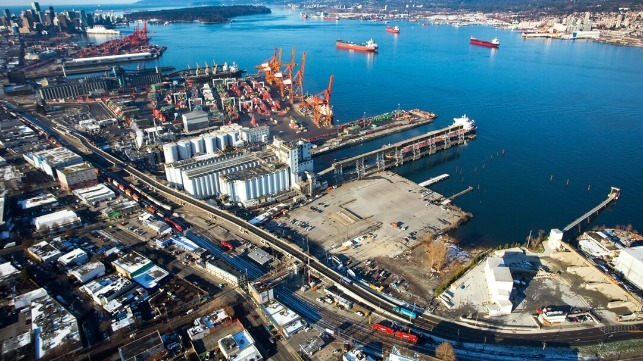North Vancouver Mountain Highway underpass improvements complete, and underpass open to port traffic

Underpass improvements on the North Shore will enhance Canada’s trade capacity, sustain growth in the gateway, and improve pedestrian safety
The Vancouver Fraser Port Authority and project partners are pleased to announce the completion and the opening of the upgraded Mountain Highway underpass on Vancouver’s North Shore. This project, led by the Vancouver Fraser Port Authority, in collaboration with Western Stevedoring, the District of North Vancouver, CN, and Squamish Nation will enhance the movement of trade-related cargo through Greater Vancouver, while improving mobility and safety, protecting the environment, and alleviating the community impacts of growing trade.

The underpass, adjacent to Lynnterm Terminal in the District of North Vancouver, is now open to vehicle traffic. Successfully delivering the Mountain Highway Underpass Project required strong partnerships with the government, port terminal partners, and local Indigenous groups.
Contributing to new road and rail infrastructure will help ease the impacts of growing trade on local communities while fulfilling the port authority’s federal mandate to enable Canada’s trade through the Port of Vancouver.
This project was identified in the Greater Vancouver Gateway 2030 strategy and received funding from Canada’s National Trade Corridors Fund in 2019. The project is jointly funded by Transport Canada and the Vancouver Fraser Port Authority

Project benefits at a glance:
Better trade efficiency for the gateway: enabling the trade gateway to operate more efficiently and handle anticipated trade growth thanks to a collaboration with government and port terminal partners
Port of entry capacity at Lynnterm Terminal for oversized cargo: the terminal’s new capacity to service oversized cargo provides the industry with certainty that the Port of Vancouver can continue to be a competitive port of entry for oversized cargo
Safe pedestrian access: new sidewalks, both along the underpass and between Dominion Street and Bay Street, leading into Lynnterm Terminal’s east gate, will ensure safer and more comfortable access and use for pedestrians
Opportunity for Indigenous cultural recognition: the project included an opportunity to recognize Indigenous culture through artwork in partnership with Squamish Nation and courtesy of artist Yul Baker embossed into the eastern concrete walkway
The inclusion of cultural recognition projects such as “Salish Eagle” is important to the port authority as it is a component of developing respectful, long-term working relationships with Indigenous communities. By engaging Indigenous groups on cultural recognition projects, we are able to incorporate aspects of interests and traditional knowledge of each Nation involved in the project. Cultural recognition has been identified as an important component of the project by the Squamish Nation.

About the Vancouver Fraser Port Authority and the Port of Vancouver
The Vancouver Fraser Port Authority is the federal agency responsible for the stewardship of the Port of Vancouver. Like all Canada Port Authorities, we are accountable to the federal minister of transport and operate pursuant to the Canada Marine Act with a mandate to enable Canada’s trade through the Port of Vancouver, while protecting the environment and considering local communities.
The port authority is structured as a non-share corporation, is financially self-sufficient, and does not rely on tax dollars for operations. Our revenues come from port terminals and tenants who lease port lands, and from port users who pay various fees such as harbour dues. Profits are reinvested in port infrastructure. The port authority has control over the use of portland and water, which includes more than 16,000 hectares of water, over 1,500 hectares of land, and approximately 350 kilometers of shoreline.
Located on the southwest coast of British Columbia in Canada, the Port of Vancouver extends from Roberts Bank and the Fraser River up to and including Burrard Inlet, bordering 16 municipalities and intersecting the traditional territories and treaty lands of several Coast Salish First Nations. The Port of Vancouver is Canada’s largest port and the third largest in North America by tonnes of cargo. Enabling the trade of approximately $240 billion in goods with more than 170 countries, port activities sustain 115,300 jobs, $7 billion in wages, and $11.9 billion in GDP across Canada.













